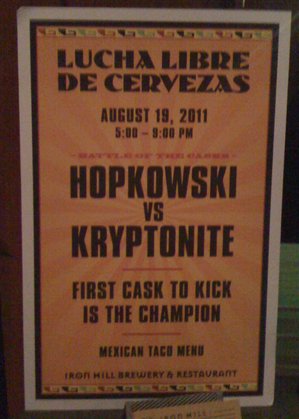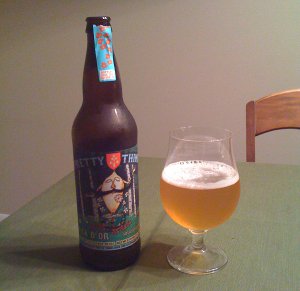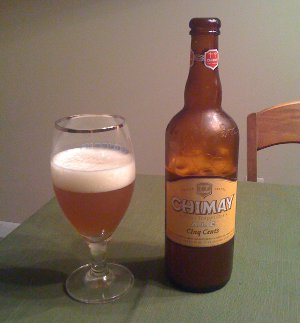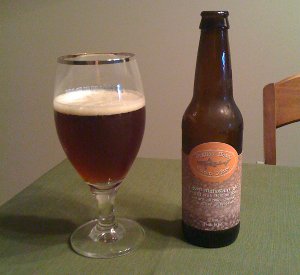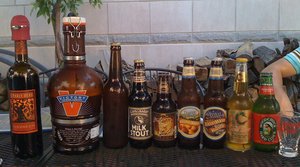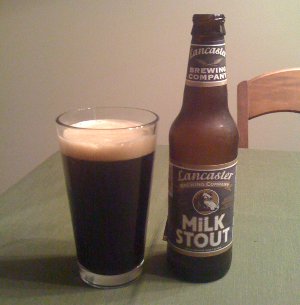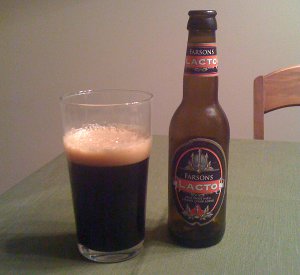After last week’s homebrew session, I was hungry and in no mood to cook, so I popped over to Iron Hill for a burger and some of their brewpubby goodness. Iron Hill doesn’t really have national exposure, but it was part of the Craft Beer Class of 1996, which also featured local mainstays like Victory, Yards, Dogfish Head, and Flying Fish. That’s pretty good company, and I do believe that much of what Iron Hill puts out compares favorably with their brethren (to see the various founders fooling around, check out this video from 2010 Philly Beer Week). Anyway, I had just walked in the door when what to my wondering eyes should appear?
Mexican wrestling? Beer? I’m in! Of course, the actual event was a week away, but both of the contestants were available, so I figured I’d do a preview of the main event and see who I thought should win.
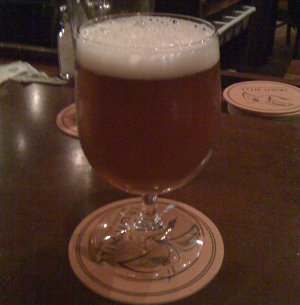
Iron Hill Kryptonite – Apparently, they’ve been making this one for a few years, but the recipe seemingly changes from year to year. Beer Advocate has it at 10.5% ABV, but everything I’m seeing about it has it lower. Iron Hill’s website has it at 9% (and the brewer made a blog entry a couple years ago that confirms it), and judging from what I had, that seems right. According to various sources, this is an Imperial IPA brewed with massive amounts of Colombus, Centennial, Chinook, Amarillo, Simcoe, and Citra hops. As the brewer sez: “There are enough hops in this beer to make even the mighty Superman buckle at the knees.” I guess Superman isn’t a hophead. As it turns out, I had this one on its second day of release, so it was quite fresh, which might account for at least part of my reaction.
From the first sip, I knew I had tasted a winner. Pours a darkish gold/amber color and a small finger of head that leaves lots of lacing as I drank. The smell is amazing – lots of citrus and pine along with that sugary sweet aroma I love so much. The sweetness comes through in the taste as well, but there’s a nice bitterness that emerges in the middle and fully balances out the sweetness in the finish. It is utterly delicious. Perfect carbonation and mouthfeel, very easy to drink despite the high ABV (which is pretty well hidden). It’s an extremely well balanced beer, and it’s probably my favorite Iron Hill beer of all time (and I’ve had many an Iron Hill beer over the years). Indeed, I just had another Pliny the Elder the other day, and I do believe this compares favorably. High praise? Perhaps, but it deserves it. I don’t know who won the official Lucha Libre de Cervezas event on Friday, but I would put my money on Kryptonite. A
Beer Nerd Details: 9% ABV on tap. Drank out of a goblet on 8/13/11. Depending on what source you’re looking at (or perhaps what batch you’re drinking), the IBUs are anywhere between 80 and 155.
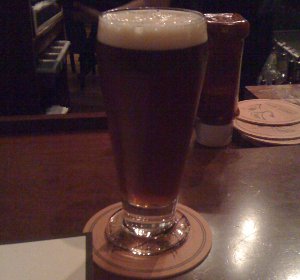
Iron Hill Hopkowski – BA actually has this as a retired beer and once again, the ABV is different there than it is on Iron Hill’s website. This is actually an imperial red ale, but with a name like Hopkowski, you can bet it’s got a ton of hoppy character involved. Not sure what the story here is, but their website does mention that it was “Made with the help of assistant brewer Mike Rutkowski and as many Polish-American friends that we could get in the brewery.” Well, that sounds fun.
This one pours a darker amber/red color, with a finger of head and lots of lacing. Not as much going on in the nose, but still enough hoppy aromas to go around. The taste is again very sweet, but this time there’s a bit of a spicy character going on in addition to the typical hoppy flavors and a hop bitterness that grows throughout the taste. Though very bitter, it’s not quite at the same level as the Kryptonite. The mouthfeel is definitely stickier, but also creamy and easy to drink. It’s actually quite good, but in comparison to the Kryptonite, it falters considerably. This is perhaps unfortunate, but that is the way of things. B+ but it would probably be higher if I hadn’t drank it at the same time as the Kryptonite.
Beer Nerd Details: 10% ABV on tap. Draink out of… whatever you call that glass on 8/13/11. Around 100 IBUs.
I don’t know what the outcome of the actual Lucha Libre de Cervezas event was, but again, I think my money is on Kryptonite (I meant to head over there, but other events conspired to keep me busy on Friday night, so no beer for me). At this point, I’m probably going to go and pick up a growler of the stuff for next weekend. Iron Hill also has a series of “bottled reserve” beers, which I’m in the process of checking out (they’re pretty pricey though). I got a bottle of their Dubbel that’s been calling my name lately, so look for a review (probably in a while). One last thing to note about Iron Hill, right now, Beer Advocate has 207 beers listed, and 85 retired (and as established above, some of the retired stuff comes back from time to time). Perhaps unsurprising, given that they’re a chain of brewpubs, but that’s still impressively prolific. I can’t believe I haven’t reviewed any of their beers before…
